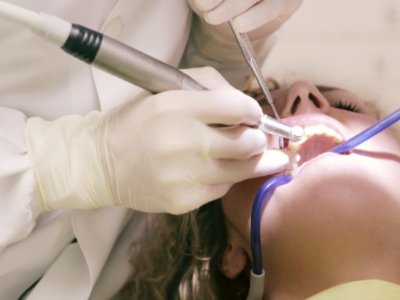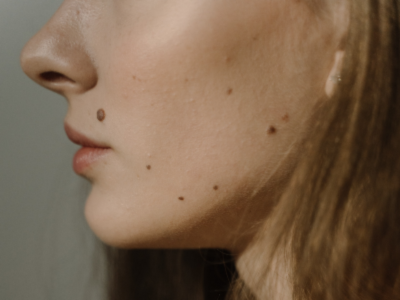Composite Fillings & Restorative Dentistry in Southend-on-Sea, Essex at JR Medical

What is restorative dentistry?
Restorative dentistry is the art of restoring a tooth to its former glory. To be able to do this we use filling materials. This can be used to repair tooth decay or defects on tooth surfaces. Fillings can restore the form and function of teeth. At JR Medical we only use composite filling material.
Composite fillings offer an alternative remedy to conventional metal tooth fillings, constituting just one of the treatment options available at our clinic.
What are composite dental fillings?
Dental composite fillings are essentially typical tooth fillings, crafted to match the natural hue of your original tooth. They are also referred to as resin fillings, white fillings, and tooth-coloured fillings. Dental composite resins are made of synthetic resins.
Their purpose aligns with that of traditional fillings – repairing cracks, fissures, and decay in compromised teeth. The dentist extracts the decayed or affected portion of the tooth and subsequently installs a composite filling in the void.
What is the process of applying composite fillings?
The process of applying composite fillings is a simple treatment that typically takes around 20 to 30 minutes. Similar to the conventional tooth filling procedure, your dentist will administer local anaesthesia to numb the teeth and remove any decay or affected portions of the tooth. Subsequently, they will meticulously clean the area to ensure the precise positioning of the composite filling. The filling is custom-designed to match your tooth's shape and the specific area it will occupy, ensuring a seamless fit. Finally, the composite filling is securely placed, guaranteeing a natural look and normal functionality comparable to that of a natural tooth.
Do composite fillings require special care?
To care for composite fillings effectively, it's important to maintain good oral hygiene by brushing your teeth twice a day with fluoride toothpaste and flossing daily to prevent new cavities. Additionally, regular dental check-ups and professional cleanings are vital to monitor the condition of the fillings and detect any issues at an early stage. Monitor your fillings for any changes, such as rough edges, cracks, or sensitivity, and promptly inform your dentist if you notice anything unusual.
Advantages of Composite Dental Fillings
- Enhanced Appearance:
A primary benefit of direct dental composites over traditional materials is their ability to closely mimic natural tooth tissue. Composites are available in a wide array of tooth colours, allowing for nearly imperceptible restoration of teeth. They can be precisely matched to the existing tooth colour, making them particularly valuable for anterior teeth restoration where aesthetics are crucial.
- Bonding to Tooth Structure:
Composite fillings establish a micro-mechanical bond with tooth structure. This reinforces the tooth's integrity and restores its original strength. Acid etching, a technique that creates micro-irregularities in enamel, enables strong adhesion of the restoration to the tooth. Dentin bonding agents further contribute to achieving high bond strengths with both enamel and dentin.
- Preservation of Healthy Tooth Structure:
The bonding nature of composite fillings eliminates the need for dentists to create retentive features that might damage healthy tooth structure, as required for amalgam fillings. Amalgam relies on the geometry of the cavity for retention, which can necessitate the removal of significant healthy tooth material. Composite materials bond directly to the tooth, minimizing the removal of healthy tissue during restoration.
- Cost-Effective and Conservative Alternative to Crowns:
In certain cases, a composite restoration can serve as a more economical option (though potentially less durable) compared to a dental crown, which can be a costly procedure. Dental crowns often involve significant removal of healthy tooth material to accommodate the crown, while composite restorations preserve more of the natural tooth.
- Avoidance of Tooth Removal:
Composite restorations can save teeth that might not be salvageable with amalgam restorations. Due to the bonding nature of composites, the specific geometry necessary for amalgam retention may not be needed, allowing for more versatility in placement.
- Versatility:
Composite fillings can effectively repair chipped, broken, or worn teeth, offering a solution that may not be feasible with amalgam fillings.
- Ease of Repair:
Minor damage to a composite filling can often be repaired by adding additional composite material, whereas an amalgam filling might require complete replacement.
- Extended Working Time:
Light-curing composite materials provide operators with more control over the setting process, allowing for longer working times compared to amalgam restorations.
- Reduced Environmental Mercury Contamination:
Composites eliminate the potential mercury contamination associated with amalgam restorations. Drilling or disposing of excess amalgam can release mercury into the environment, which is avoided with composite materials.
- Minimised Mercury Exposure for Dentists:
Using composites reduces the risk of mercury vapour exposure to dentists during the preparation of new fillings or drilling into existing amalgam fillings.
- Corrosion Resistance:
Unlike some types of amalgams, resin composites do not corrode, ensuring lasting durability without the risk of corrosion-related issues.
These advantages highlight the versatility, aesthetics, conservation of healthy tooth structure, and reduced environmental and health concerns associated with composite dental fillings compared to traditional amalgam fillings.
Call JR Medical now on 01702 314497
All of our services cover the whole of Southend-on-Sea including Westcliff-on-sea, Leigh-on-Sea, Rochford, Hadleigh, and Benfleet. We also cover a wider area of Essex, including Rayleigh, Basildon, Grays, and Thurrock.














